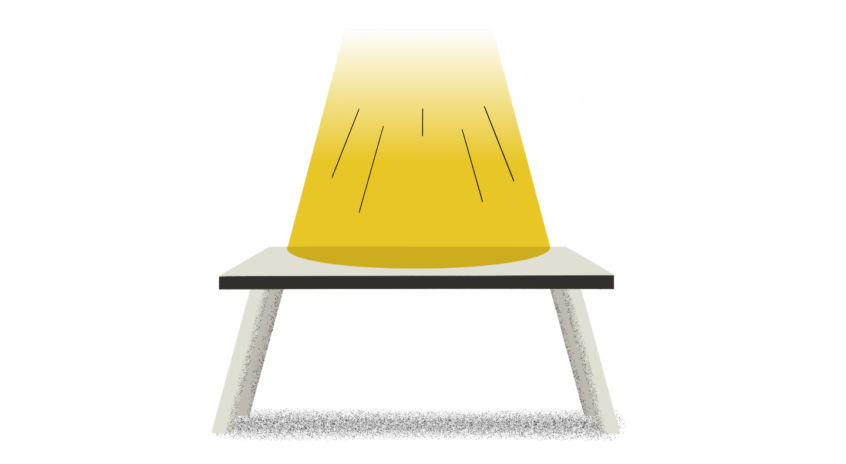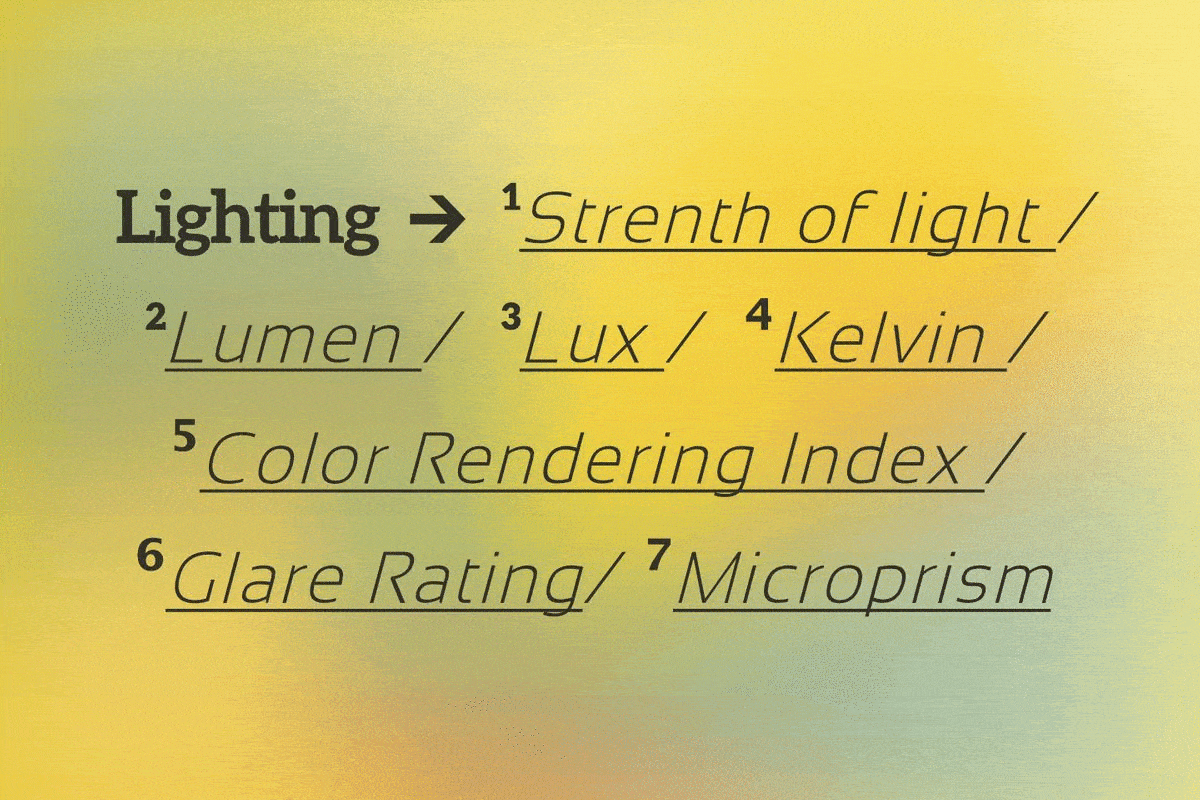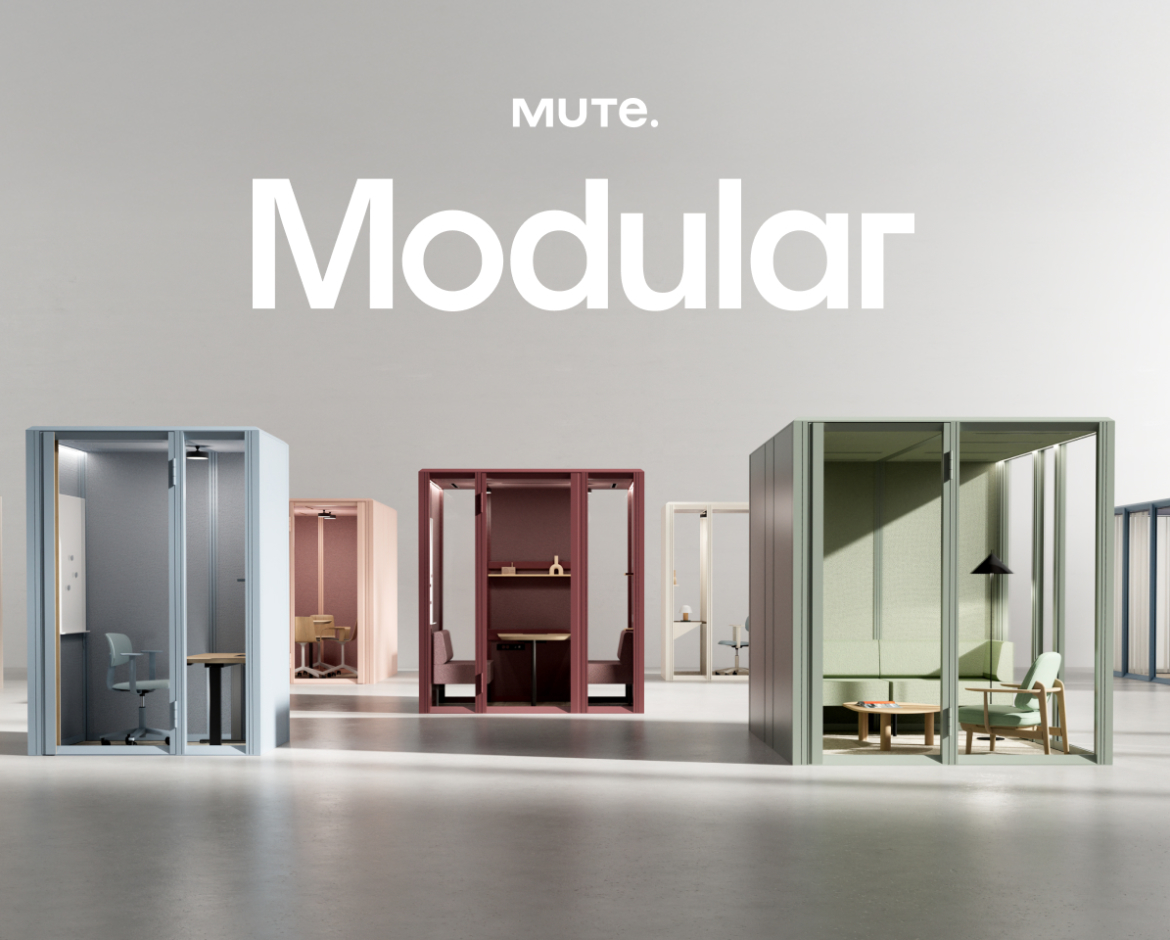7 most commonly used concepts that you may be unfamiliar with
Every world has its jargon – and the Lighting world is no exception. This article is meant to help you cut through the noise of lighting industry’s tough-to-decipher acronyms and expressions so that you can discover the true value behind the buzzwords. Take a look and see what’s the difference between strength of light and light output, what does UGR stand for and what the hell is Microprism Diffuser. Here we go!
Strength of light – W (Watt)
Traditional way of measuring the light showing how much energy is consumed by lighting source. This way of measurement was working well with traditional lighting bulbs, where the higher the wattage lamp is, the brighter it is. However, after LED lighting emerged, it became ineffective. Why? Because now it doesn’t necessarily show us the real brightness of light – LED lighting consumes a lot less energy while providing more light than incandescent lamps. Classic bulb is not effective as professional LED Lighting, because it changes most of its energy into heat, not in light.
Light output – LM (Lumen)
The real unit of light used in lighting measurement. Basically, Lumen is the total amount of light emitted in all directions from the source. The higher the lumen rating, the “brighter” the lamp will appear. It is a way more effective and practical solution to measure lighting because with low energy LED lamps, more Light Output can be achieved with much less power consumption. For example, a 6.5W LED lamp will give a similar light output to a 50W bulb lighting. That’s 87% less energy (Watts) for the same light output!

LX (Lux)
Lux is a measure of illuminance. It’s the total amount of light that falls on a certain surface. The same Light output can provide different Lux levels, depending on the place we want to measure. For example, if you hang a lamp which gives 2500 lm. only 0,5 m. above the surface you want to illuminate, you will get a lot higher level of LX than when you place the same lamp few meters higher. LX level has a direct impact on the comfort of work.
Bellow you can find recommended Lux levels in different interiors:
→ Office, meeting room – 500 lux
→ Reception desk – 300 lux
→ Lounge – 200 lux
→ Entrance Hall – 100 lux
Color temperature – K (Kelvin)
It is a scale for measuring color of light on a warm-to-cool spectrum. It is measured in Kelvins – higher number means “cooler” tones, while lower numbers reflect “yellower”, lighter tones. Cooler or neutral tones (for example 4000 K) are believed to have a positive influence on work efficiency. That is why they are recommended for working spaces and open offices. Warmer colors, like 3000K, will work well in social areas, creating more cozy atmosphere. On the picture below you can see that it is possible to create completely different atmosphere using different color temperatures in the same room.

Color Rendering Index (CRI)
CRI index measures the ability of a certain light source to reveal “realistic” colors of objects in contrast to a natural light source. The range of Index is between 0 and 100. A CRI of 100 represent maximum value of natural sun light. Lower CRI value indicates that some colors may appear unnatural, not sharp enough and mix with each other.
Professional lighting products for restaurants, offices and other places, where we spend more than 4h every day, should be at least CRI 80. Bellow you can see that the color of the apple changes from most natural to a way more artificial and pale, depending on the level of CRI.
UGR – Unified Glare Rating
UGR determines if light source blinds us or not. This classification ranges from 5 to 40, with low numbers indicating low glare. A good parameter is below 22, but workstations in offices need UGR level below 19. Inappropriate, too sharp and excessive lightings cause excessive brightness to be bounced off reflective surfaces like computer screens or whiteboards. This can create a serious disruption for employees – headaches or eyes troubles. As with lux, a real UGR can be measured only on spot.
Microprism diffuser
It is a tool used to scatter light and to create more soft lighting experience. It’s installed on the light source to reduce glare and to provide extremely high visual comfort thanks to its characteristic prismatic structure. That is why Microprism diffuser is ideal for the illumination of workplaces. Allows to reach optimal UGR level in offices spaces.











